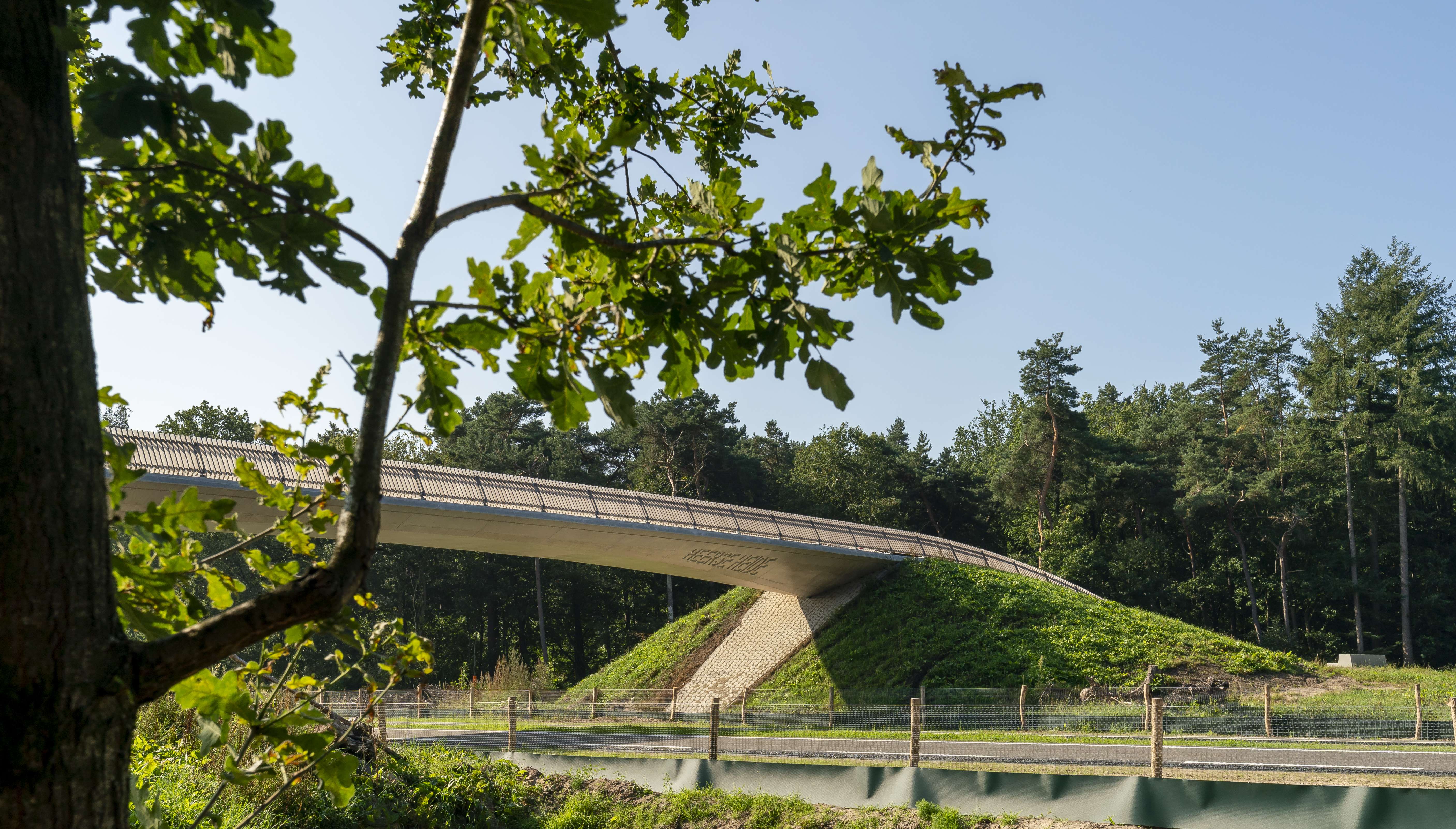
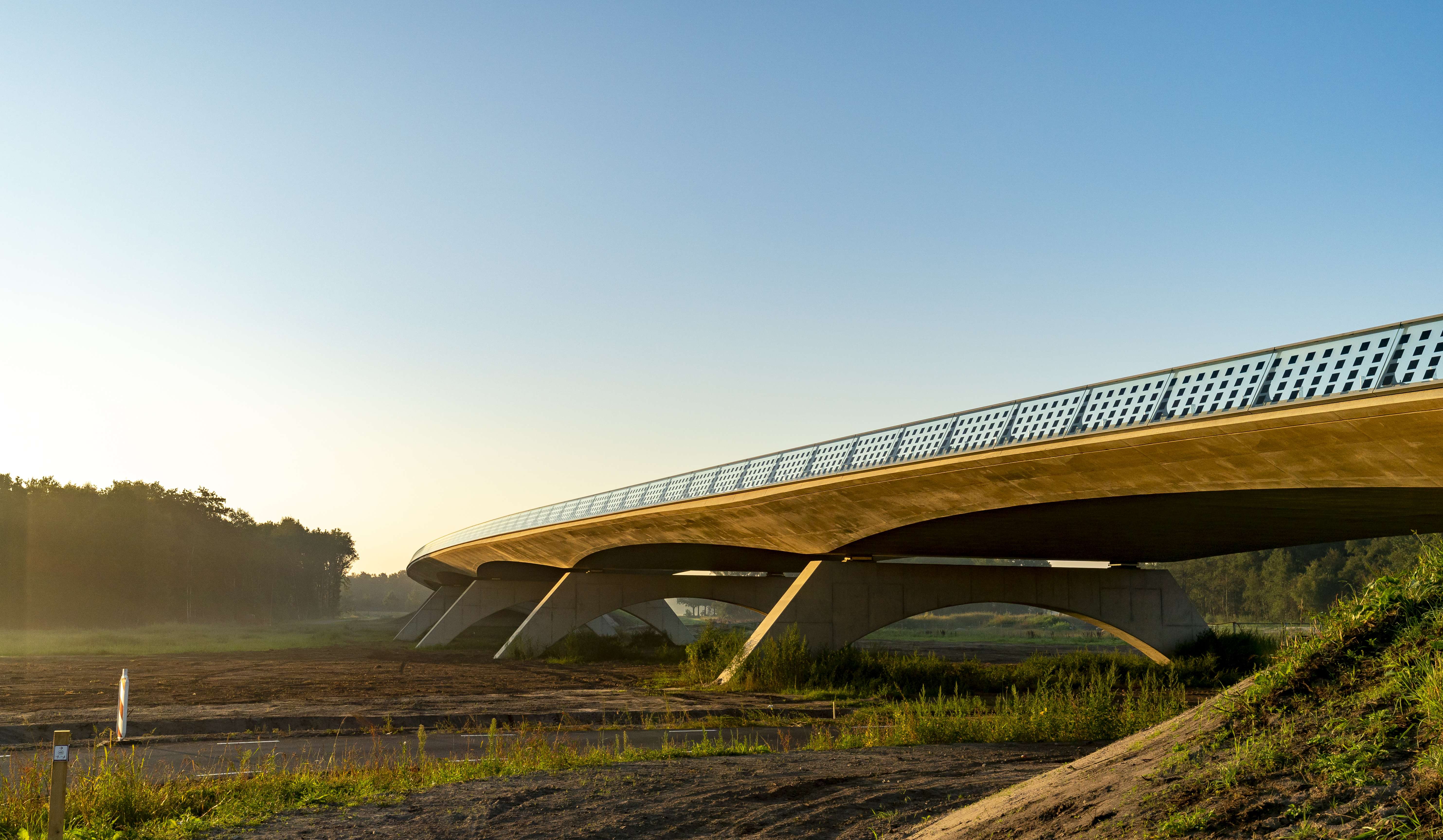

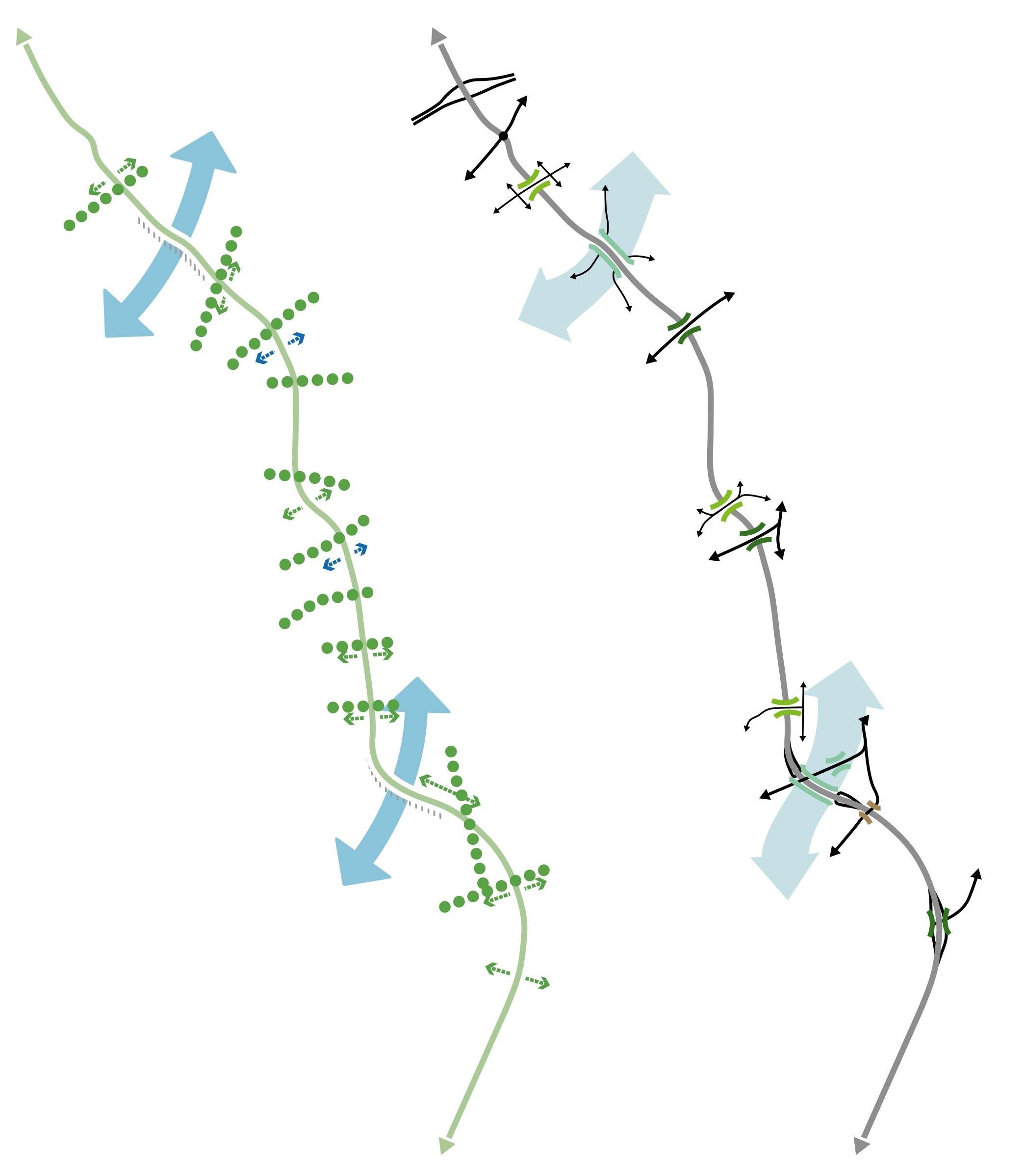



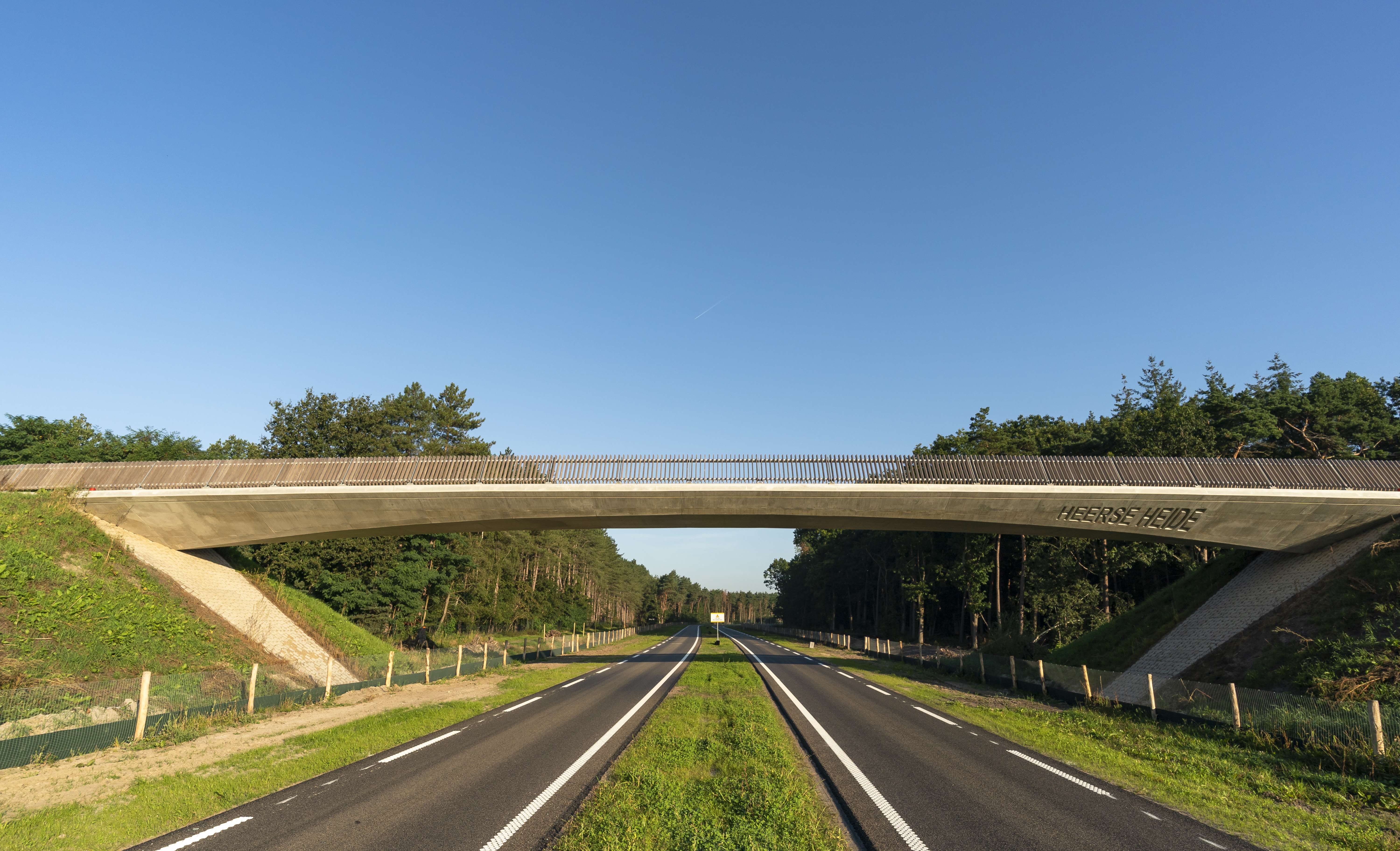
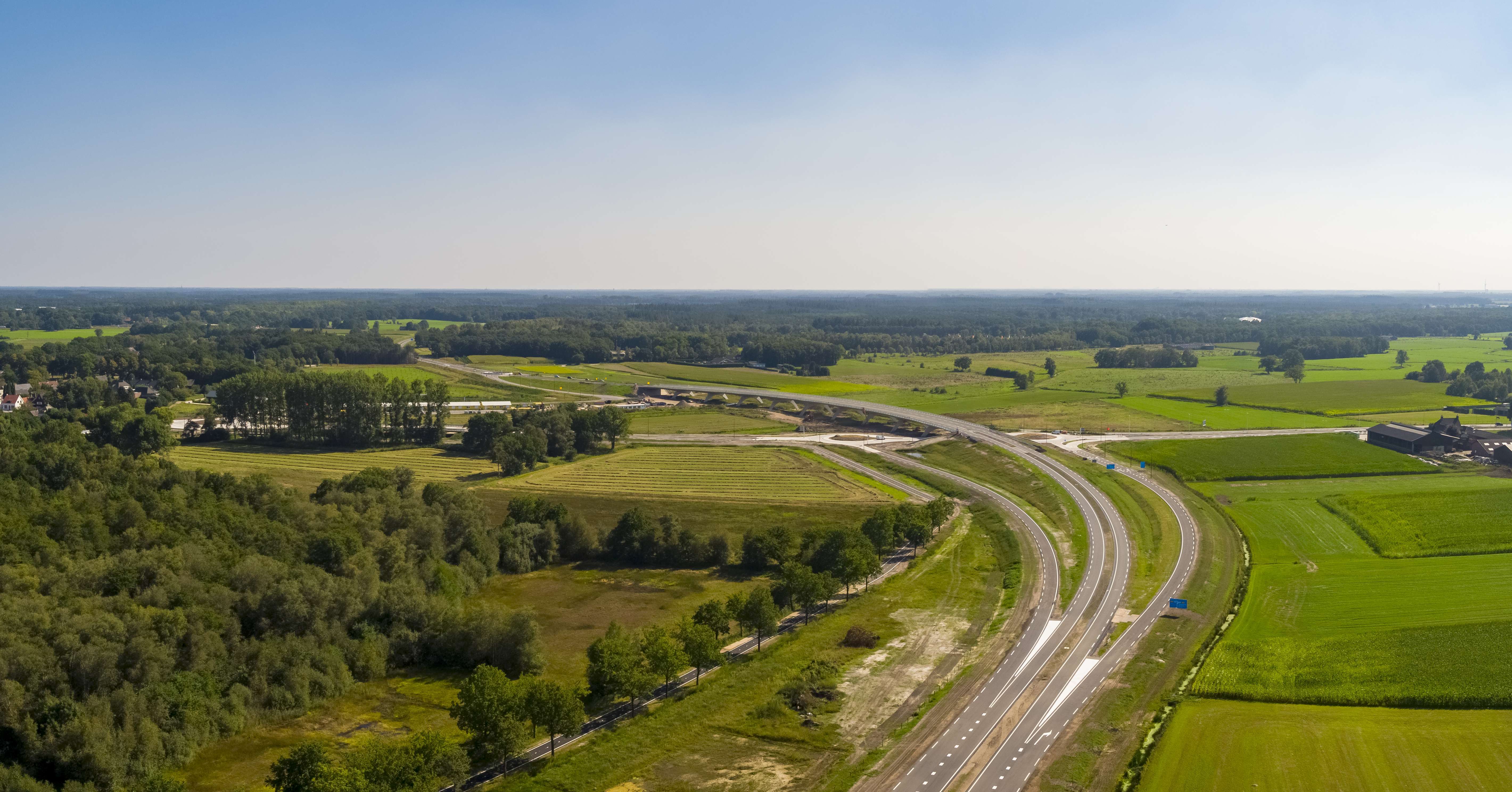
N69 - The Greenest Road
N69 - The Greenest Road
N69 - The Greenest Road
The ‘Greenest Road of Brabant’ makes geographical connections and embodies the connection between infrastructure, the valuable landscape of forests and stream valleys, and the people with their interests. The renewal of the 8,5 km provincial road has increased the liveability and accessibility of the N69 and its border with Belgium. By constructing a high-quality road that is placed naturally in the landscape, the user experience has been optimized. Maximizing spatial quality, integration, sustainability, and ecology was therefore one of the most important project objectives in the elaboration of the integral design.
The new road winds through valuable and vulnerable agricultural land, forests, and nature reserves. The design of all the viaducts and bridges is slender and modest, based on the abstract requirements as stated in the visual quality plan drafted by wUrck. Special area icons have been added around the N69 to fit in the natural green environment. The qualities and values of the area served as the starting point for the design of the N69.
The result is a robust green ecological framework that flows over, under, and along the new route. The framework is based on different landscape lines. Existing intersecting structures such as the woods, stream valleys, and recreational routes and avenues have been reinforced, and new structures have been added. Besides the fact that these structures influence the integration and user experience, they also have an important ecological function as natural hop-overs for bats, among others. Small mammals and amphibians can cross the road using one of the 14 different fauna passages.
The form and material of viaducts and the bridges crossing the streams are in harmony with each other, with a recognizable modest and slender silhouette. The minimalistic integration and slim structures enhance the experience of the landscape and provide a large panoramic view over the road. The wide slender legs that the stream valley bridges are based on, ensure that the landscape continues undisturbed. The three pedestrian viaducts have been specially designed as connections over the new road and places to stay. With the flowing landings and the wooden slatted railings, they are incorporated into their environment in the woods.
Huge material savings have been achieved by optimizing the design (i.e. the concrete as slim as possible) with respect to the client’s request. For the implementation, Boskalis uses biofuels and new asphalt technologies to maximize material benefits. The two stream valley bridges are equipped with screens with integrated solar cells. A cementless bicycle bridge made of prestressed geopolymer concrete has been placed over the Natura2000 stream de Keersop. This concrete is 75% cleaner than traditional concrete and has been used constructively for the first time. A sustainable integration with a significantly lower CO2 footprint. The greenest road in Brabant has been realized by leading the way in sustainability and innovation within the infrastructure.
The N69 is realised by Boskalis Nederland, in collaboration with an integrated team including H+N+S Landscape Architects and NEXT architects. In addition, 25 cooperating parties from the Gebiedsakkoord are involved. After two years of construction, the New Connection N69 is open to traffic since October 18, 2021.
Team at NEXT architects: Bart Reuser, Marijn Schenk, Michel Schreinemachers with Jurriaan Hillerstrom, Wiebe Strick, Veronica Tirelli.
Photography: Paul Raats and H+N+S Landscape Architects
